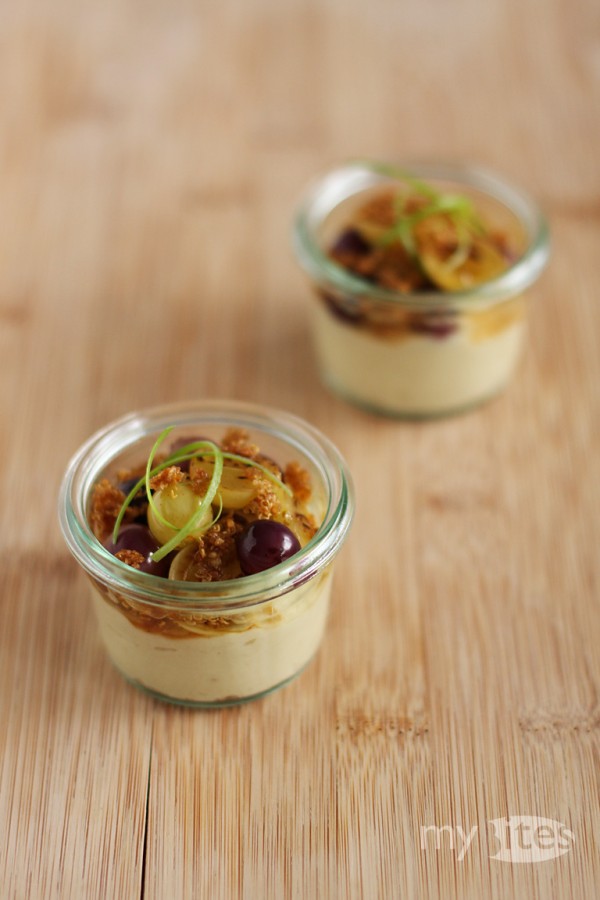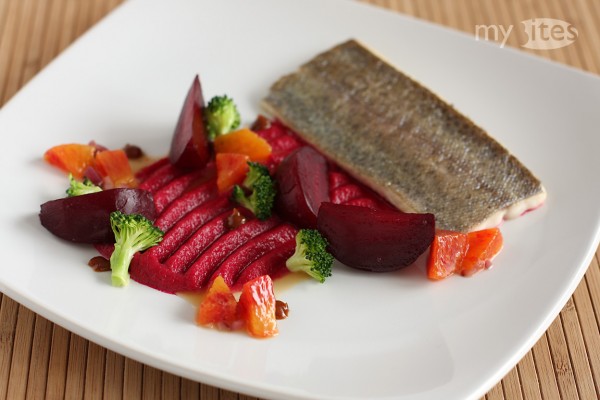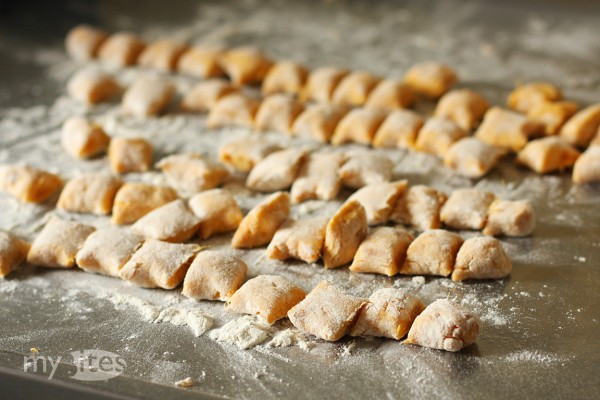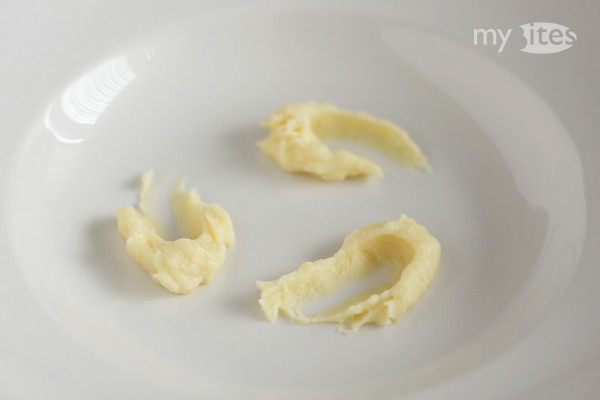When a recipe refers to neutral oil as an ingredient, it most often takes sunflower seed or grapeseed oils as examples. Until recently, I preferred using a perfectly neutral grapeseed oil for making my green herb oils, because it never interfered at all with the herb’s original flavor. A few weeks ago a friend of mine gave me a bottle of her very special grapeseed oil, which already blew my mind just after screwing off the plug when I smelled its scent. It has a very strong (and addictive) nutty scent (somewhat similar to walnut) mixed with an aged red wine perfume. The flavor of this grapeseed oil is extremely rich and combines (similarly to its scent) the aromas of red wine, grapes and nuts. Due to its quite unique flavor, I used it as an unusual “spice” in the appetizer below, featuring ingredients from the current autumn season.
Tag Archives: puree
Salmon and Kohlrabi
Baking in salt-crust is a technique usually applied to fish, meat, potatoes, beets and sometimes celery roots. In fact, a lot more vegetables can be covered in coarse sea salt and baked in the oven, where the salt-crust not only seasons the vegetable, but also keeps all the flavors inside. This time I experimented with salt-baked kohlrabi, which developed into a magnificent result.
Coconut Trout Confit with Beetroot Fondant
It’s almost 4 years now that I filleted a whole fish for the first time in my life. Since then I stopped counting the number of fish I’ve filleted and really gained routine in getting clean and beautiful cuts as result. Nowadays I prefer to buy whole fish at the local market, because this way I can use the bones, head, tail and fins as well to cook a flavorful fish stock, which really enhances sauces, risottos and soups. I prefer to buy local and traditional fish such as trout, char or carp. Sea fish are no options for me, because I don’t have any reliable source for buying fresh seafood, and my hometown Erlangen is simply too far away from the sea.
Regarding the connection between seafood consumption and the distance to the sea, I had a surprising experience a few years ago in Italy, which I like to bring up every time I’m asked about seafood. I was lucky to get a publication accepted at a major conference in computer science, which was held in the beautiful city of Florence. Of course, I used the lunch breaks and the evenings to explore the local restaurant scene. I was even more fortunate having a receptionist at my hotel who was actually a native Florentine citizen. As almost everybody in Italy, he loved to eat, and especially to eat well. So from the first day on I consulted him which restaurant he recommends me to visit. I wasn’t a regular tourist, I really wanted to get to know the real local cuisine. He always told me only the next location I should go to and based on my report the next day he recommended me the next place to visit. This tactic was quite comprehensible, because I could have been a usual tourist, who actually might have been afraid of tripe, wild boar or other local specialties. But he pretty soon learned, that I was after the real local cuisine.
Trout with Beets, Broccoli and Blood Orange
Two friends of mine, Gabi and Gaba recently launched a new Hungarian food blog with recipes and information about fish and seafood. Because I love to work with local fish like trout or char, they asked me to write a guest post with a recipe featuring trout and seasonal ingredients. Although winter is dark and cold, the ingredients of this season aren’t nearly as grey and dreary as they are often told. This dish is a good example for the bright colors of winter. Actually, the colors of the vegetables are complemented by the single grey element on the plate only, the trout.
Sweet Potato Gnocchi with Cinnamon Ice Cream
Next to blackberries, quince is my most favorite fruit. Although it resembles a pear or an apple, it is far too hard and sour to be eaten raw. However, if you cook quince almost indefinitely it not only turns to a lovely pink or red color, but also develops an irresistibly rich flavor. Unfortunately, the season for quince is quite short during autumn, but you can keep the jam, puree or quince jelly for several months. It pairs great with cheese, however, this time I used the quince puree in a dessert paired with another typical autumn and winter ingredient: sweet potato.
Pigeon Breast with Quince Sauce and Autumn Vegetables
I wondered why red or white wine is usually added to reduced sauces. Usually the wine is allowed to cook off completely, so in most cases – as long as you’re not cooking specifically a red wine sauce – wine is not so much added for its taste than rather for its acidic component. Another function of the wine is to scrape off the brown roasted parts from the bottom of the pot, but for this purpose water works perfectly well too. Instead of the wine I had the idea to add some quince as an acidic component. Cooking quince over a long time magically enhances its flavor, so I thought it would work ideally in a sauce too, since the the basic stock had to be cooked for several hours. The quince worked really well in the sauce, so if you have any problems with adding alcohol to a sauce – although the alcohol will cook off completely – during autumn you can add some fresh quince instead.




